Richard Glassock, a long-time contributor to the blog, is from Australia, and has lived and worked in Hungary for the last few years. He’s known to blog readers for his work in autonomous aircraft, very large sailplanes, and hybrid propulsion design.
He shares news this week about “some excellent work by an Australian researcher I have known for a while. In one way or another, he is actualizing many of the ideas/dreams I had 20 years ago.” The craft isVTOL (vertical takeoff and landing), fixed wing, capable of automated flight, and is almost a hybrid (depending on definition).
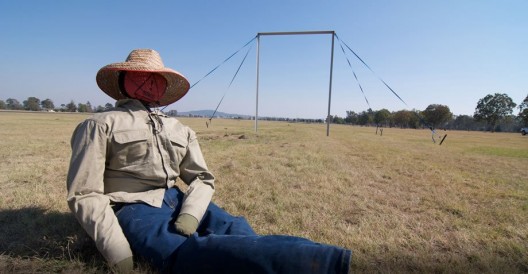
Outback Joe, who must be found 10 kilometers from a competitor’s takeoff point, and his blood sample flown safely home
It was developed for the Outback Challenge, originally a chance for aircraft designers to show how their craft could autonomously search for and find Outback Joe, a mannequin layabout who would otherwise become dingo bait. The 2014 event “was themed around an outback rescue mission.” 2016 sees Joe “stuck in a clearing in the Australian Outback, surrounded by floodwaters, but needs to send an urgent blood sample to his doctors.”
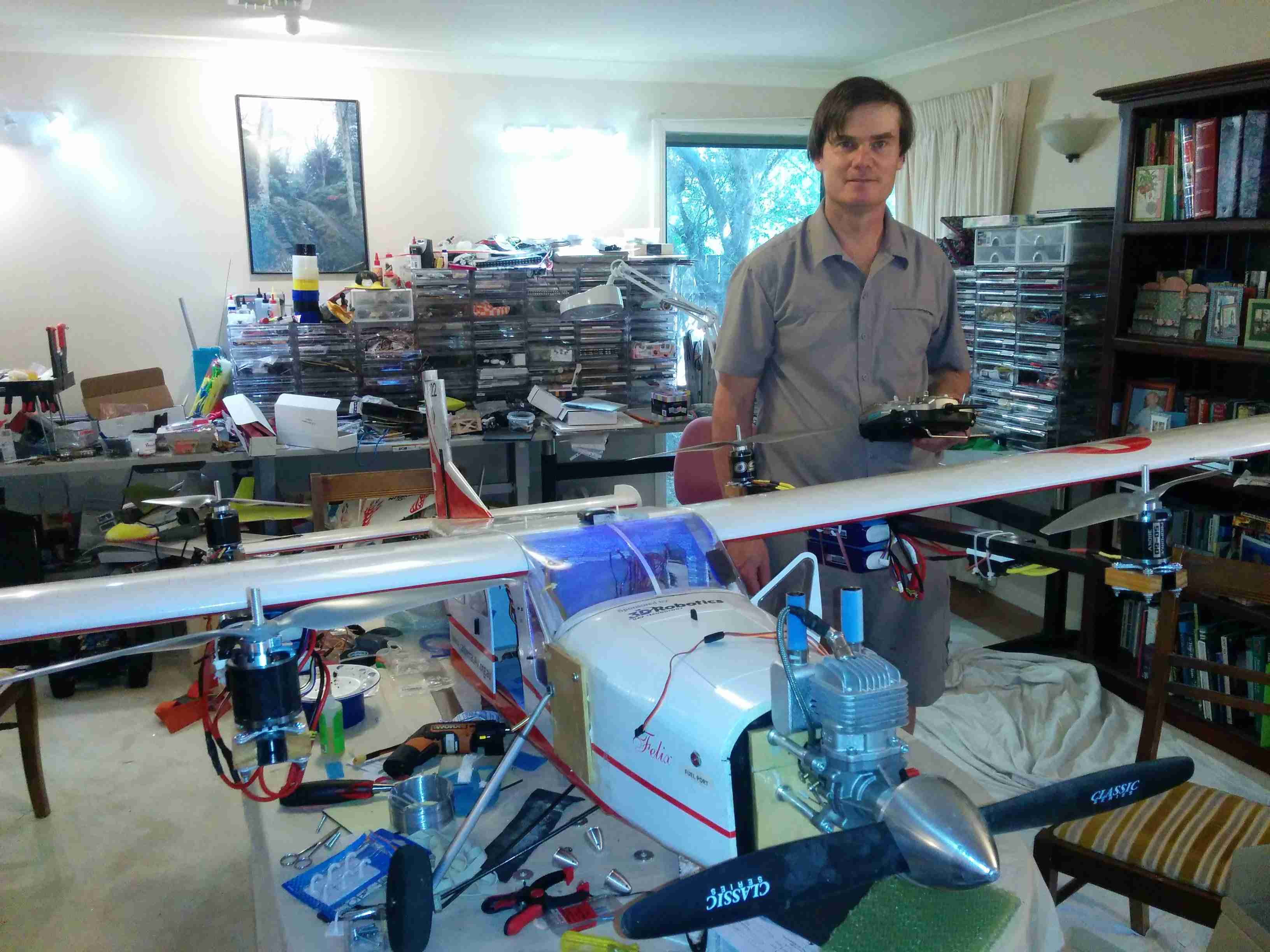
“Tridge” with his 35 cc engined Pilatus Porter model – augmented with four vertical-lift electric motors: this is surely a complex flight regime to control adequately
Although teams have Joe’s GPS coordinates, the area will be surrounded by obstacles, which each team will have to work around, land, and retrieve the blood sample before returning quickly to home base. The Challenge is put together by Richard’s alma mater, the Queensland University of Technology and CSIRO (Commonwealth Scientific and Industrial Research Organization), a government-based technology incubator that works to implement and commercialize Australian inventions.
With a 20-kilometer out-and-return flight required for the blood sample retrieval, and assorted obstacles strewn about to make the task hard, “CSIRO engineers say that it is unlikely that traditional fixed-wing unmanned aircraft or small multi-rotor vehicles will be able to meet the challenge, so competitors will need to use hybrid flying robots.”
Richard’s friend Andrew Tridgell (Tridge to his friends) has met many of the requirements of the Challenge by retrofitting a Pilatus Porter model with a quadrotor-type vertical lift system. He explains the design, construction, and destruction of a truly adventurous large model aircraft, combining quadrotor lift and high forward speed from its 35 cc petrol engine. Initial flight and stable-appearing flybys held no foreshadowing of a later calamity. See the very successful flight tests leading to that below.
Even though the large “quadplane” has an ignominious finale’ in the second video, Richard feels, “It is good that they so openly and self-deprecatingly acknowledge the failure, but it should not obscure the obvious success. Steady progress for several years now. Personally I expect the advantages of tilt-rotor integrated hybrid electric drive will be realized quite soon.”
Richard’s Personal Memory and a Rescue Dog Side Note
Richard Glassock has been working on a similar quadrotor for several years, transitioning from petrol power to electric as the technology caught up with his vision. He sent this picture to share two of his favorite things.
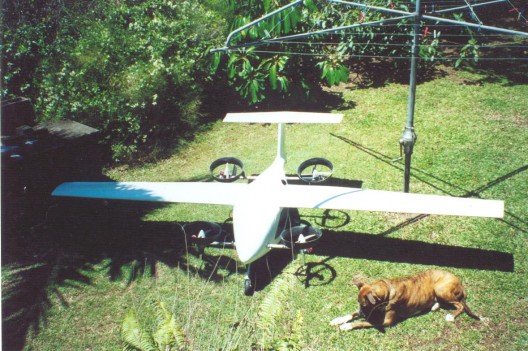
Billy Big Dog with an even bigger quadrotor. Richard misses the dog, but still has the airplane
Richard had Billy Big Dog as a fitting model to pose with his big quadrotor in about 2001. “…He was an awesome dog, but couldn’t last forever. Just a few weeks ago I was lamenting the fact that I haven’t had a dog since, and one reason is the difficulty of travel. I jokingly told some friends about how if the dog had his own aircraft it could make things easier, well it is possible with autopilots etc. But then the next week I saw this [news item].
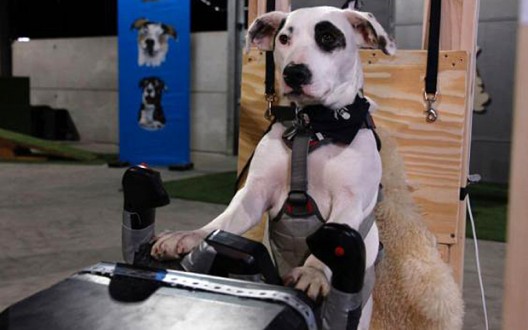
Rescue dog returning the favor – perhaps flying into a disaster zone near you soon
“Anyway that white plane had a 4 meter span and take-off weight between 25 and 50kg. I flew it in several configurations. It had 4x 2hp methanol engines (back before there were viable electrics), and another version with 2x 6hp gas engines at the front. I am planning to refurbish it and use it for research work in the UK in the next year. That pic was from about 2001 (scanned from an old fashioned print). It would hover with the wings off, but not enough power with everything onboard. The example from Tridge (his official nickname), makes clear the sort of duty cycle where electrics can offer superior power, highest output only required for a minute or so, therefore can be run at a significant margin above max continuous. Also clear that the drive electronics must be up to the task.”
Honest postmortems are the way engineering firms follow up on their projects, and a good way to make a sober assessment of whether and how well project goals were achieved. Thanks to Richard and his friend Tridge for this helpful insight into what works – and what doesn’t – and why.

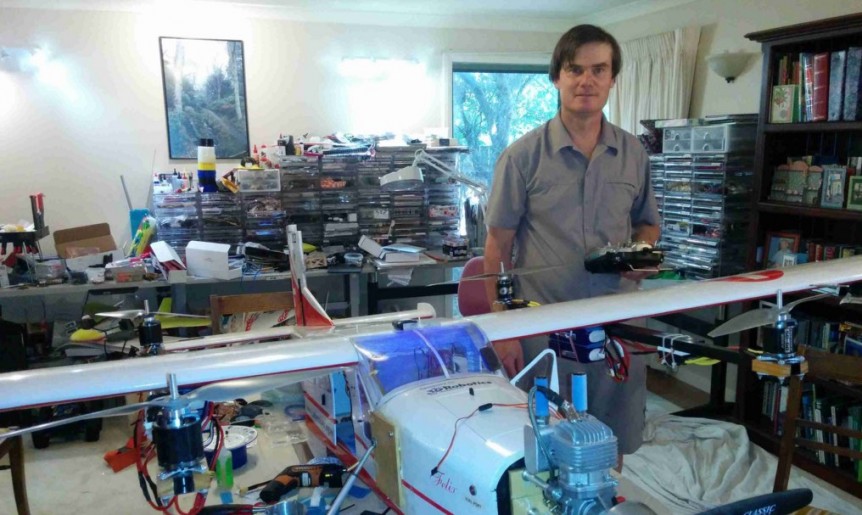
Comments 1
Very advanced technology! Accept my congratulation!